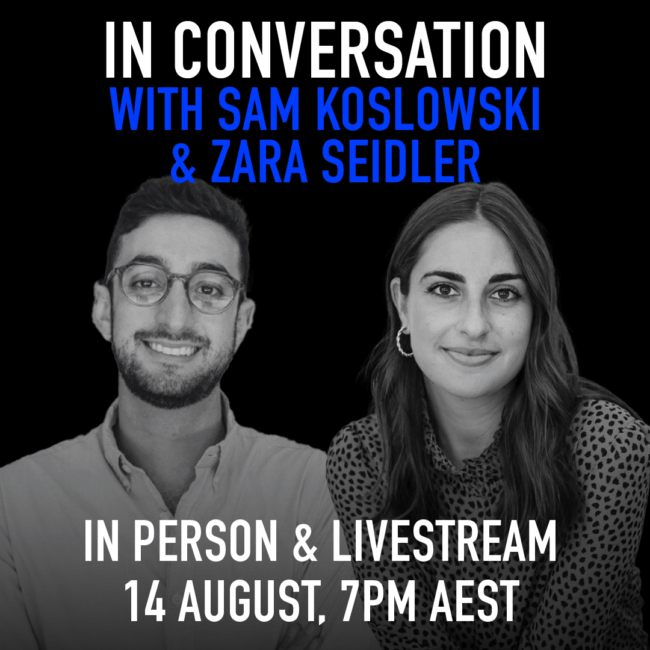
When people reduce an artist to one aspect of their identity, whether it be gender, ethnic or religious, it diminishes their humanity.
Identity is indelibly linked to our individual and collective places in the world. It is a marker, across many classifications, that creates distinctions that can help or harm us. But should it have such power? Is there any neutrality to how we create for public consumption, and if not, how can there be neutrality in how these are critiqued? Even with the cultural, social, sexual and other differences, surely there is acceptance that stories do – and should – have universal value?
A few years ago, Ruby penned an influential essay noting that, sometimes, white arts reviewers seemed unable or unwilling to see past ethnicity in literary criticism. In particular, there was an apparent tendency to take everything an Arab artist says literally, as if style, metaphor, flair and all the other features of literary penmanship were simply beyond our capabilities. It was not an objection to white reviewers critiquing the work of non-white artists. It was simply asking: “How do we respond when white reviewers can’t understand our work fairly enough to critique it?”
It was disheartening to see, some years later, the same issue rear its head, again in the pages of prestigious literary journals, again taking an Arab author to task by refusing to accept his work as fiction and insisting it must be thinly disguised autobiography. This time, however, the criticism was spearheaded by other Arabs.
Acclaimed Arab-Australian poet and novelist Omar Sakr was the subject of a bizarre string of connected critiques of his debut novel Son of Sin, two of which were written by Arabic speakers. What links these essays is not an issue with Sakr’s narrative style, plot structure, or characterisation but a fixation on his personal life and method of transliterating Arabic expressions, with the latter dismissed as too crude and incorrect to pass muster as ‘genuine’ Arab storytelling. His credibility diluted under the more ‘authentically Arab’ gaze of these two reviewers, Sakr’s Arabness was put into question.
It was extraordinary to witness such a coordinated attack on someone’s identity, only for identity itself to then be used to mask the attack. The implication being that as an artist, Sakr’s identity is fair game, but as his critics, theirs is beyond reproach.
As two Arab women who have both been critiqued extensively and who have critiqued the work of others, we are no strangers to writing and talking about these issues. We do not hide our Arab heritage, how this has informed our work, and how we are perceived and treated by wider society.
But what we have to offer is also of value to non-Arabs. Both of us have tried, over many years, to normalise rather than ‘otherise’ our experiences as a minority.
We believed that in being open about our identity – and the backlash we receive for it – we would eventually be able to transcend, not the identity itself, but the defining role it too often plays in our professional as well as personal lives. To make it a part of us but not all of us so that we may break down rather than reinforce the figurative walls that separate us.
Ruby’s portfolio of media work includes more than a decade of arts criticism, political analysis, and feature articles on everything from mental health to homelessness to pop culture. It is her work on race, however, that attracts the most attention and spurs the most backlash. Often, when critics accuse us of “making everything about race,” they are simply revealing their own tendency to see us only in racial terms. Our input on general societal matters considered irrelevant, we are simultaneously expected to have nothing more than our identity to offer and then berated for offering it on our own terms.
There is an endless thirst for stories that confirm the oppressed Arab woman archetype, only for this archetype to then be used against us. A workplace manager once told Amal that her “difficulty” with authority had something to do with her upbringing and the men in her life, while another taunted her about her perceived (lack of) sex life. Even as a journalist reporting for trade publications she was reduced to her identity – and found wanting.
Defying these forced identity markers, Amal went on to write several books that traverse universal themes, from the divine and spiritual belief, to ageing and how we live. Her novels explore connection, love and personal evolution, all centring Arab women raised in Australia but who remain connected to the homeland, primarily Palestine. But the stories are not about this. Navigating dual worlds; these characters acknowledge but are not defined by their heritage. It is their reality and normality. They do not exist to address stereotypes but as characters in their own right. They just are, without apology or reduction or explanation.
Still, media coverage of her work often reverts to stereotype, accompanied by images of women in headscarves or headlines about Amal’s faith. Every image, every headline, seemingly there to remind us that, even when our work subverts it, we cannot outrun that archetype.
We are more than decades of trauma and displacement. We are not conflict. Our dispossession is not the definition of who we are, and what we can achieve. But in a social climate of such gatekeeping as to which Sakr was subjected, can we ever simply be writers or does our ethnicity mean we can only be Arab-Muslim ones? Must we write merely to educate and inform, only to live in fear of being deemed not Arab enough, or can we be creative storytellers in our own right?
For all the discourse about identity and discrimination, including the much-needed influx of historically marginalised voices, it seems that there is an attachment, both from the dominant society and from within these marginalised groups to maintain the status quo. Reducing us to the barest, stereotypical elements of our racial heritage – whether or not we wear a headscarf; if we transliterate “uncle” correctly – we are refused an existence outside of its constraints.
It is hard not to conclude that we are entering – if not already immersed in – a social landscape in which our identities are not lived but performed, and our existence is not normalised but capitalised upon.
How do we recalibrate so that we may embrace identity without being reduced to it? At the very least it requires an acknowledgement that we are not here to tick boxes with our difference. We tell stories not to meet the arbitrary standards of those who unethically wield identity like a cudgel but because humans always have. Our stories are not only cultural records but also historical ones, telling us where we have been and where we can go.
Ethics in your inbox.
Get the latest inspiration, intelligence, events & more.
By signing up you agree to our privacy policy
You might be interested in…
Opinion + Analysis
Politics + Human Rights, Relationships
Free markets must beware creeping breakdown in legitimacy
Opinion + Analysis
Relationships, Society + Culture
FODI launches free interactive digital series
Big thinker
Health + Wellbeing, Politics + Human Rights, Relationships
Big Thinker: Judith Butler
Big thinker
Relationships




